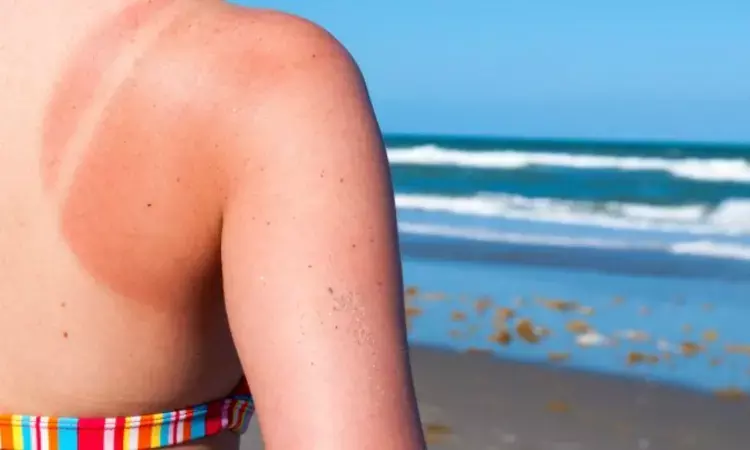- Home
- Medical news & Guidelines
- Anesthesiology
- Cardiology and CTVS
- Critical Care
- Dentistry
- Dermatology
- Diabetes and Endocrinology
- ENT
- Gastroenterology
- Medicine
- Nephrology
- Neurology
- Obstretics-Gynaecology
- Oncology
- Ophthalmology
- Orthopaedics
- Pediatrics-Neonatology
- Psychiatry
- Pulmonology
- Radiology
- Surgery
- Urology
- Laboratory Medicine
- Diet
- Nursing
- Paramedical
- Physiotherapy
- Health news
- Fact Check
- Bone Health Fact Check
- Brain Health Fact Check
- Cancer Related Fact Check
- Child Care Fact Check
- Dental and oral health fact check
- Diabetes and metabolic health fact check
- Diet and Nutrition Fact Check
- Eye and ENT Care Fact Check
- Fitness fact check
- Gut health fact check
- Heart health fact check
- Kidney health fact check
- Medical education fact check
- Men's health fact check
- Respiratory fact check
- Skin and hair care fact check
- Vaccine and Immunization fact check
- Women's health fact check
- AYUSH
- State News
- Andaman and Nicobar Islands
- Andhra Pradesh
- Arunachal Pradesh
- Assam
- Bihar
- Chandigarh
- Chattisgarh
- Dadra and Nagar Haveli
- Daman and Diu
- Delhi
- Goa
- Gujarat
- Haryana
- Himachal Pradesh
- Jammu & Kashmir
- Jharkhand
- Karnataka
- Kerala
- Ladakh
- Lakshadweep
- Madhya Pradesh
- Maharashtra
- Manipur
- Meghalaya
- Mizoram
- Nagaland
- Odisha
- Puducherry
- Punjab
- Rajasthan
- Sikkim
- Tamil Nadu
- Telangana
- Tripura
- Uttar Pradesh
- Uttrakhand
- West Bengal
- Medical Education
- Industry
Certain Psoriasis Patients at Higher Risk of Excessive Sun Exposure: Study

Researchers have found in a new research that female, younger, average-weight psoriasis patients with intermediate skin phototype and a history of phototherapy are more prone to excessive sun exposure, often linked to tanning behaviors.The findings emphasize the need for targeted sun safety education in this subgroup. The study was conducted by E. Mahe and colleagues published in the journal JEADV Clinical Practice.
Addiction to tanning, which is an uncontrollable craving for exposure to ultraviolet light, has been identified as a behavioral addiction present in 10% to 25% of the population. The current study sought to further comprehend the prevalence of this activity in patients with psoriasis and that which augments risk, providing new information regarding targeted education and management approaches.
Addiction to tanning is a common problem in dermatology, particularly in patients with chronic skin disease like psoriasis. Patients with moderate-to-severe psoriasis tend to seek the sun for beneficial effects of ultraviolet light on lesions. But excessive sun-seeking can have detrimental effects, such as higher risks for skin cancers and more severe long-term skin complications. Knowledge of the prevalence and risk factors of ESE in psoriatic patients will enable clinicians to provide improved guidance, promote photoprotection, and adapt treatment to avoid harmful behavior.
The analysis included cross-sectional baseline data from the PsoBioTeq cohort, for patients enrolled between 2012 and 2022. 3705 patients with moderate-to-severe psoriasis were included. Tanning addiction was estimated using patient-reported excessive sun exposure (ESE) on the basis of their assent to the statement, "I try to expose myself to the sun as often as possible." Clinical characteristics, medical history, prior treatment, and factors related to psoriasis were analyzed to determine if there were associations with ESE.
Results
636 patients (17.2%) out of the 3705 patients reported behaviors typical of ESE. Multivariate analysis disclosed some significant associations:
• Age: Patients who were younger were more likely to report ESE (Odds Ratio [OR] 0.97, 95% Confidence Interval [CI] [0.96; 0.97]).
• Gender: Women were at greater risk (OR 1.52, 95% CI [1.20; 1.93]).
• Weight: Normal-weight patients were more likely to have ESE than overweight or obese patients (OR 0.57, 95% CI [0.42; 0.77]).
• Skin Type: Patients with intermediate skin type presented with increased risk (OR 1.80, 95% CI [1.36; 2.38]).
• Phototherapy History: Individuals with a history of previous phototherapy treatment were more likely to perform ESE (OR 1.53, 95% CI [1.19; 1.96]).
• Previous Treatment: Past use of ustekinumab, a biologic, was characterized by a lower risk of ESE behavior (OR 0.40, 95% CI [0.19; 0.84]).
This research found that 17% of moderate-to-severe psoriasis patients practiced excessive sun exposure, which is influenced by various demographic and clinical determinants. Identification of these high-risk patients for tanning addiction and early disease management along with proactive education may prevent long-term hazards due to excessive ultraviolet light exposure. Adoption of these measures would enhance skin as well as the overall quality of life of the psoriasis patient.
Reference:
Mahé, E., Curmin, R., Paul, C., Bachelez, H., Beylot-Barry, M., Beneton, N., Dupuy, A., Joly, P., Jullien, D., Richard, M.-A., Viguier, M., Sbidian, E., Chosidow, O., Tubach, F., & the PsoBioTeq Study group. (2025). Sun exposure behaviors of patients with moderate‐to‐severe psoriasis: Results from the french PSOBIOTEQ cohort. JEADV Clinical Practice. https://doi.org/10.1002/jvc2.70029
Dr Riya Dave has completed dentistry from Gujarat University in 2022. She is a dentist and accomplished medical and scientific writer known for her commitment to bridging the gap between clinical expertise and accessible healthcare information. She has been actively involved in writing blogs related to health and wellness.
Dr Kamal Kant Kohli-MBBS, DTCD- a chest specialist with more than 30 years of practice and a flair for writing clinical articles, Dr Kamal Kant Kohli joined Medical Dialogues as a Chief Editor of Medical News. Besides writing articles, as an editor, he proofreads and verifies all the medical content published on Medical Dialogues including those coming from journals, studies,medical conferences,guidelines etc. Email: drkohli@medicaldialogues.in. Contact no. 011-43720751


